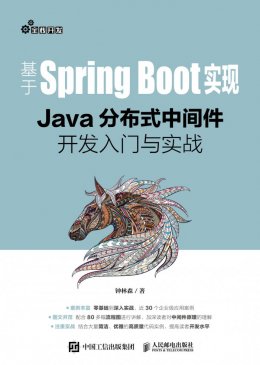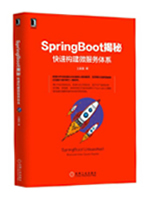为网友们分享了springboot相关的编程文章,网友钟彦慧根据主题投稿了本篇教程内容,涉及到springboot、事件监听相关内容,已被844网友关注,涉猎到的知识点内容可以在下方电子书获得。
定义事件
@Getter
public class TestEvent extends ApplicationEvent {
private String msg;
public TestEvent(Object source, String msg) {
super(source);
this.msg = msg;
}
}
定义事件监听(注解方式)
@Component
public class TestListen {
@EventListener
public void testListen(TestEvent event) {
System.out.println(event.getMsg());
}
}
注意:@Component 注解
发布事件
@Autowired
private ApplicationContext publiser;
@GetMapping("test-listen")
public void testListen() {
for (int i = 0; i < 10; i++) {
System.out.println("i = " + i);
}
publiser.publishEvent(new TestEvent(this, "测试事件监听"));
for (int j = 0; j < 10; j++) {
System.out.println("j = " + j);
}
}
测试时执行顺序:
- i循环
- 打印"event = [测试事件监听]"
- j循环
异步监听
监听加上@Async注解
@Component
public class TestListen {
@EventListener
@Async
public void testListen(TestEvent event) {
for (int i = 0; i < 10; i++) {
System.out.println("event = [" + event.getMsg() + "]");
}
}
}
测试时执行顺序:
- i循环
- j循环
- 打印"event = [测试事件监听]"
代码: async
springboot进行事件监听有四种方式:
1.手工向ApplicationContext中添加监听器
2.将监听器装载入spring容器
3.在application.properties中配置监听器
4.通过@EventListener注解实现事件监听
讲到事件监听,这里我们说下自定义事件和自定义监听器类的实现方式:
- 自定义事件:继承自ApplicationEvent抽象类,然后定义自己的构造器
- 自定义监听:实现ApplicationListener<T>接口,然后实现onApplicationEvent方法
下面讲下4种事件监听的具体实现
方式1.
首先创建MyListener1类
public class MyListener1 implements ApplicationListener<MyEvent>
{
Logger logger = Logger.getLogger(MyListener1.class);
public void onApplicationEvent(MyEvent event)
{
logger.info(String.format("%s监听到事件源:%s.", MyListener1.class.getName(), event.getSource()));
}
}
然后在springboot应用启动类中获取ConfigurableApplicationContext上下文,装载监听
@SpringBootApplication
public class LisenterApplication
{
public static void main(String[] args)
{
ConfigurableApplicationContext context = SpringApplication.run(LisenterApplication.class, args);
//装载监听
context.addApplicationListener(new MyListener1());
}
}
方式2.
创建MyListener2类,并使用@Component注解将该类装载入spring容器中
@Component
public class MyListener2 implements ApplicationListener<MyEvent>
{
Logger logger = Logger.getLogger(MyListener2.class);
public void onApplicationEvent(MyEvent event)
{
logger.info(String.format("%s监听到事件源:%s.", MyListener2.class.getName(), event.getSource()));
}
}
方式3.
首先创建MyListener3类
public class MyListener3 implements ApplicationListener<MyEvent>
{
Logger logger = Logger.getLogger(MyListener3.class);
public void onApplicationEvent(MyEvent event)
{
logger.info(String.format("%s监听到事件源:%s.", MyListener3.class.getName(), event.getSource()));
}
}
然后在application.properties中配置监听
context.listener.classes=com.listener.MyListener3
方式4.
创建MyListener4类,该类无需实现ApplicationListener接口,使用@EventListener装饰具体方法
@Component
public class MyListener4
{
Logger logger = Logger.getLogger(MyListener4.class);
@EventListener
public void listener(MyEvent event)
{
logger.info(String.format("%s监听到事件源:%s.", MyListener4.class.getName(), event.getSource()));
}
}
自定义事件代码如下:
@SuppressWarnings("serial")
public class MyEvent extends ApplicationEvent
{
public MyEvent(Object source)
{
super(source);
}
}
进行测试(在启动类中加入发布事件的逻辑):
@SpringBootApplication
public class LisenterApplication
{
public static void main(String[] args)
{
ConfigurableApplicationContext context = SpringApplication.run(LisenterApplication.class, args);
//装载事件
context.addApplicationListener(new MyListener1());
//发布事件
context.publishEvent(new MyEvent("测试事件."));
}
}
启动后,日志打印如下:
2018-06-15 10:51:20.198 INFO 4628 --- [ main] com.listener.MyListener3 : com.listener.MyListener3监听到事件源:测试事件..
2018-06-15 10:51:20.198 INFO 4628 --- [ main] com.listener.MyListener4 : com.listener.MyListener4监听到事件源:测试事件..
2018-06-15 10:51:20.199 INFO 4628 --- [ main] com.listener.MyListener2 : com.listener.MyListener2监听到事件源:测试事件..
2018-06-15 10:51:20.199 INFO 4628 --- [ main] com.listener.MyListener1 : com.listener.MyListener1监
听到事件源:测试事件..
由日志打印可以看出,SpringBoot四种事件的实现方式监听是有序的
完整的代码路径:https://github.com/ingorewho/springboot-develope/tree/master/springboot-listener
以上就是本文的全部内容,希望对大家的学习有所帮助,也希望大家多多支持码农之家。












